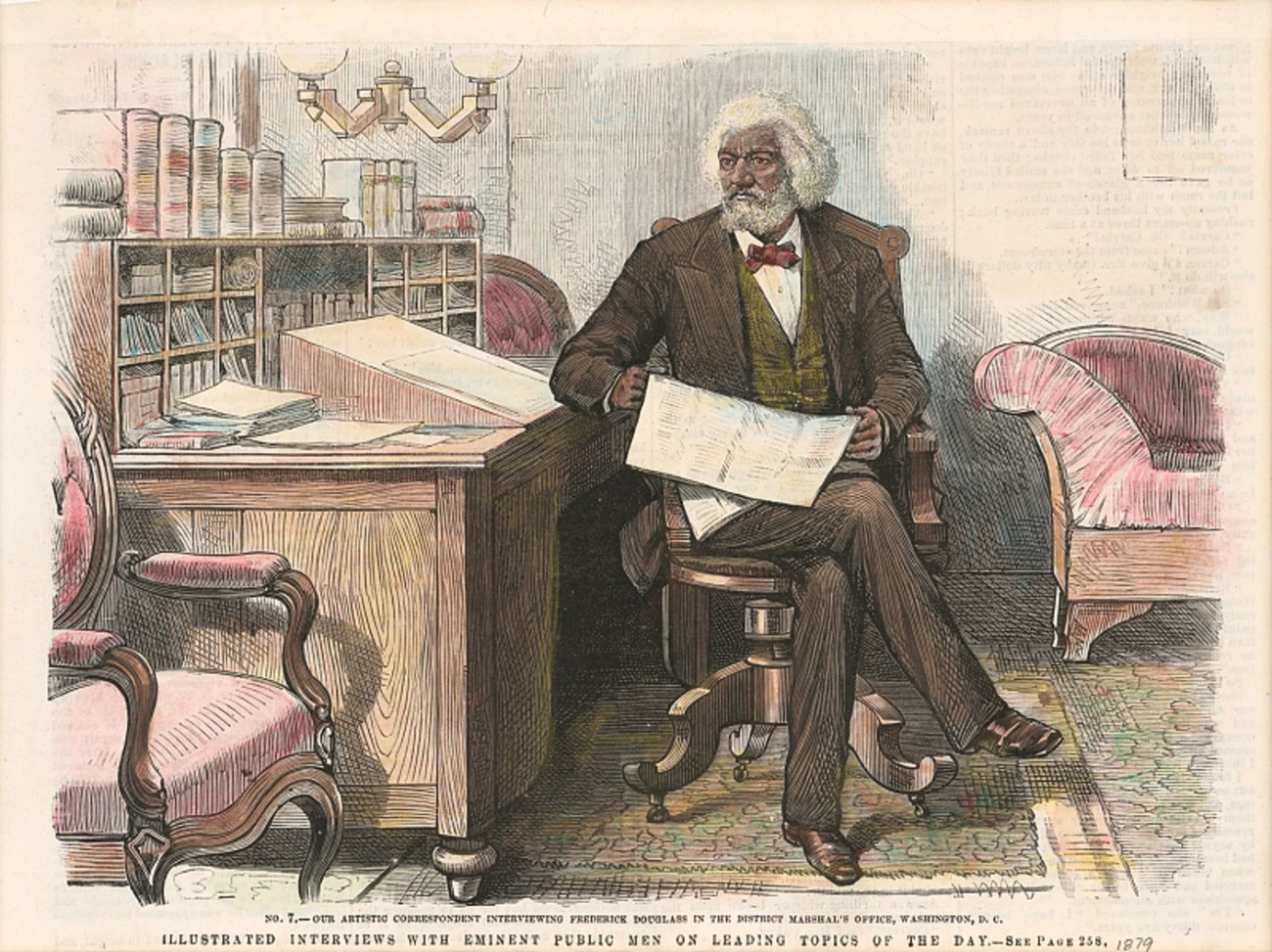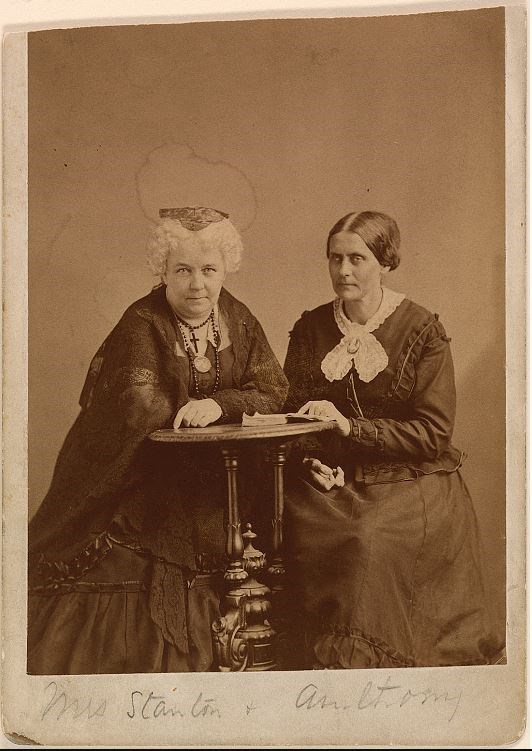Part of a series of articles titled Suffrage in America: The 15th and 19th Amendments.
Article
Fighting for Suffrage: Comrades in Conflict
What happens when people can’t agree on the right way to do something?

Collection of the Smithsonian National Museum of African American History and Culture, Gift of Joele and Fred Michaud. Object # 2013.239.12.
http://collections.si.edu/search/detail/edanmdm:nmaahc_2013.239.12
Even when people are working toward common goals, they may disagree on the best way to achieve those goals. One case from the struggle for voting rights involved a split between the abolitionist Frederick Douglass and the women’s rights pioneers Susan B. Anthony and Elizabeth Cady Stanton. For years, the three activists were close friends and worked side-by-side to pursue universal suffrage (the right to vote for all adult citizens) and the abolition of slavery.
At first, Douglass, Stanton, and Anthony all supported universal suffrage so that everyone--men and women, Black and white-- would have the right to vote. But while they shared many beliefs and goals, there were points of tension too. The Fourteenth Amendment passed in 1868 recognizing that people born into slavery were entitled to the same citizenship status and protections that free people were. However, because the amendment did not grant the universal right to vote, abolitionists and some suffragists withdrew from the universal suffrage campaign to focus on the enfranchisement (obtaining the right to vote) of Black men.

National Portrait Gallery, Smithsonian Institution, Object # S/NPG.77.48
http://collections.si.edu/search/detail/edanmdm:npg_S_NPG.77.48
Some of those involved in the suffrage movement also divided over whether to support the Fifteenth Amendment, which would protect the rights of Black men but did not include women. Douglass strongly supported suffrage for women, but believed that the African American community had a more urgent need for enfranchisement. He was afraid that if the change did not occur at this particular moment, it possibly would never happen. Douglass had the support of many white abolitionists such as Lucy Stone and Wendell Phillips.
Elizabeth Cady Stanton and Susan B. Anthony disagreed with their friend. They insisted that all men and women must gain the right to vote at the same time. Indeed, they sometimes argued that white women were more qualified to vote than Black men and allied themselves with opponents of Black suffrage.
Each sides felt betrayed by the other. Anthony and Stanton were disappointed that Douglass supported the Fifteenth Amendment after being a longtime proponent of women’s suffrage. They were frustrated that they were being told to wait even longer for the rights that they had spent decades fighting for. Douglass was hurt by the insults they levied against African Americans and their lack of support for African American causes.

Smithsonian Institution, National Museum of American History,
http://collections.si.edu/search/detail/edanmdm:siris_arc_362381
Their disagreement became an open conflict at the 1869 meeting of the American Equal Rights Association (AERA), which took place in New York City’s Steinway Hall and Brooklyn Academy of Music. Douglass, Stanton, and Anthony had a heated debate about whether whether the AERA should support the Fifteenth Amendment if it only referenced Black men. They each argued how the lack of suffrage endangered their community. African Americans were persecuted for their race and women were the property of men; both needed the vote in order to improve their lot.
Ultimately, Stanton and Anthony would never agree with Douglass on this issue. After the argument, Anthony, Stanton, and their supporters left the meeting and founded a new organization, the National Woman Suffrage Association. The NWSA would not focus on any issues besides women’s right to vote.
This conflict caused a painful rift in the three activists’ friendship. Each one felt that the other could not see why their community needed the vote more. In addition, Douglass, Stanton, and Anthony thought that trying to attain the vote for both African Americans and women at the same time would be impossible.They could not envision a way that everyone’s voice could be heard. Meanwhile, many Black women continued to campaign for universal suffrage, knowing that discrimination based on race and sex were equally unacceptable.
Years later, Douglass, Stanton, and Anthony reconciled and had a cordial relationship. In spite of their differences, they had a lot in common. They shared many of the same goals, principles, and experiences. Neither women nor African Americans had been recognized as complete citizens. The root of their conflict was a question without an answer: whose humanity should be recognized first?
Consider This:
-
How open are you and your community to hearing different perspectives to reach a shared goal?
-
How would you reach out to repair relationships that have been harmed?
Last updated: October 9, 2020
